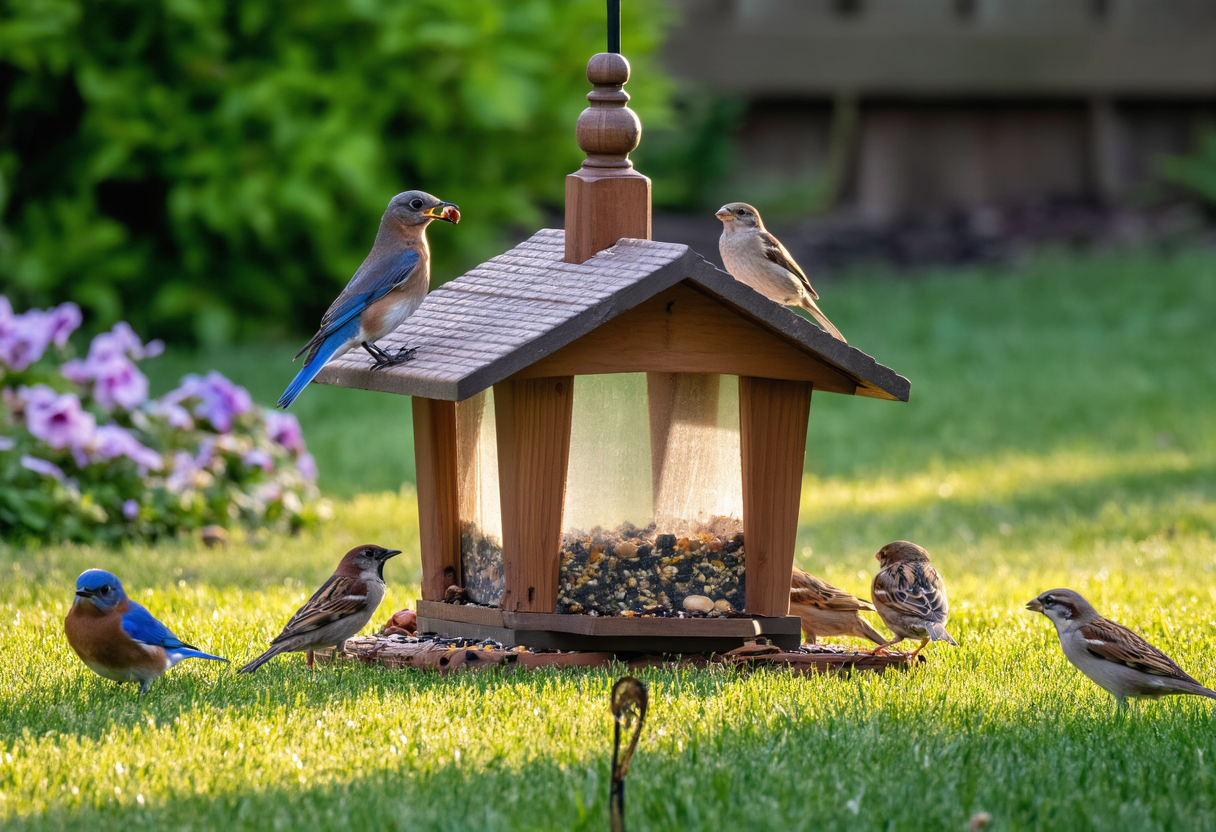Bird Feeders: Your Ultimate Guide to Choosing the Best Ones!
Looking to attract beautiful birds? This comprehensive guide explains everything you need to know about bird feeders, from types and materials to setup and maintenance tips. Optimize your bird feeding experience and enjoy the vibrant wildlife right in your backyard!
Exploring Different Types of Bird Feeders
When selecting bird feeders, it’s essential to understand the various types available in the market. From tube feeders specifically designed for smaller birds to platform feeders suitable for a variety of species, each feeder type serves a unique purpose. Some feeders focus on attracting specific birds, such as hummingbirds or finches, while others welcome broader varieties. Suet feeders trap essential fats that many birds require during cold months, providing a vital energy source. Additionally, squirrel-proof feeders can mitigate issues many bird lovers face regarding these clever critters. By exploring these options, individuals can tailor their setups for maximum enjoyment and efficiency.
Choosing the Right Location for Your Bird Feeders
The location of your bird feeders significantly impacts their usage. Ideally, feeders should be placed in visible areas but away from potential feline threats. A good rule of thumb is to site them near shrubs or bushes, providing birds with an escape route if necessary. Elevated spots can add security but make sure they remain accessible for filling and cleaning. Ensuring feeders are positioned to receive the right mix of sun and shade will help keep food dry and palatable. Visibility enhances not only the viewing experience but also ensures that birds feel safe and secure when feeding, thus encouraging frequent visits.
Seasonal Considerations for Bird Feeders
Different seasons require varying care and types of food within bird feeders. For instance, winter months might necessitate high-calorie options to cater to the energy needs of birds dealing with harsh weather. During spring, many birds transition to nesting, which can lead to decreased feeder traffic. Therefore, adjusting your offerings according to the changing seasons maximizes your engagement with these visitors. Additionally, keeping feeders stocked during migration seasons is essential for supporting birds in transit. Awareness of these seasonal changes keeps your bird feeder effective and ensures you'll enjoy a lively backyard throughout the year.
Maintenance and Cleaning of Bird Feeders
Maintaining bird feeders is crucial for ensuring the health of the birds that visit them. Regular cleaning keeps feeders hygienic and minimizes disease transmission among birds. Detailing the cleaning process involves emptying the feeders, washing with hot soapy water, rinsing thoroughly, and allowing adequate drying time before refilling. Choose locations that make these tasks convenient, encouraging regular upkeep. If feeders are neglected, not only may birds stop visiting, but they may also face health risks. Thus, fostering a habit of routine maintenance not only protects the birds but sustains the enjoyment of birdwatching as well.
Bird Feeders and Community Engagement
Bird feeders can also foster community bonds by encouraging neighborhood interactions centered around shared wildlife interests. Families might organize birdwatching events, encouraging others to put up feeders and participate in local observation. Sharing knowledge about which feeders attract which species or migratory patterns can enrich the entire community's experience with birdwatching. Schools might use bird feeders as tools for environmental education, providing children firsthand interactions with wildlife. By anchoring these experiences in neighborhoods, bird feeders create avenues for connection not just with nature, but between individuals.
Innovative Designs in Bird Feeders
As interest in conserving wildlife grows, innovative designs in bird feeders have emerged. Sustainable materials are becoming more popular, appealing to eco-conscious bird lovers. Smart feeders that can track feeding times and birds visiting are also gaining traction, merging technology with nature. Such innovations not only enhance bird feeding efficiency but intrigue enthusiasts, encouraging them to explore further. Staying abreast of these advancements can enrich your experience and ensure you provide the best care for our feathered friends.
